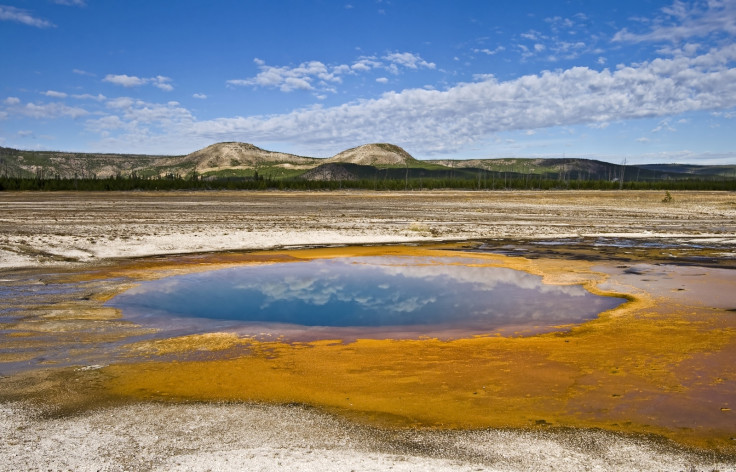A Yellowstone supervolcano eruption is powerful enough to block the Sun and reverse global warming
Two previous eruptions created a volcanic winter forcing down global temperatures.

Around 630,000 years ago, the Yellowstone supervolcano produced two huge eruptions in relatively quick succession which were so powerful that they fundamentally altered the global climate, according to new research.
The last catastrophic eruption at the site, which formed the vast Yellowstone caldera - a large crater formed by the collapse of a volcano into itself – was thought to have been a single event.
However, researchers have found evidence of two separate layers of volcanic ash bearing the chemical fingerprint of the super eruption in seafloor sediments off the coast of Southern California.
Together, these sediments and ash layers – known as tephra – form a remarkably detailed record of ocean and climate change, revealing that the last eruption was actually two relatively closely spaced eruptions. The after-effects of these two events temporarily halted a period of global warming, according to researchers.
"We discovered here that there are two ash-forming super-eruptions 170 years apart and each cooled the ocean by about 3 degrees Celsius," said Jim Kennett, a geologist from the University of California, Santa Barbara.
Kennett suggests that both of these eruptions caused separate volcanic winters – a phenomenon which occurs when ash and sulphur dioxide from the volcano reduce the amount of sunlight reaching the Earth's surface, temporarily cooling the planet.
These two cooling events came at a time when the Earth was beginning to warm after an ice age – an especially sensitive time for the global climate. Kennett and his fellow researchers found that the events were abrupt, coinciding precisely with the timing of the two eruptions.
Furthermore, according to climate models, both of the cooling periods lasted longer than they should have. "We see planetary cooling of sufficient magnitude and duration that there had to be other feedbacks involved," Kennett said.
The feedback effects that occurred during the two volcanic winters could have prolonged the periods of cooling by causing an increase in sea ice and snow cover - which reflects sunlight - or altering ocean circulation, for example.
If Yellowstone were to erupt today, the event may be powerful enough to trigger another volcanic winter, which could have devastating consequences for humanity. However, predicting when a catastrophic eruption will occur is incredibly difficult and it could be hundreds or thousands of years before the next one.
At Yellowstone, the most recent catastrophic eruptions have occurred 2.1 million, 1.3 million and 630,000 years ago, although numerous less-powerful, non-explosive eruptions have taken place over this time.
The Yellowstone caldera is the second largest in the world and is often referred to as the Yellowstone supervolcano.





















